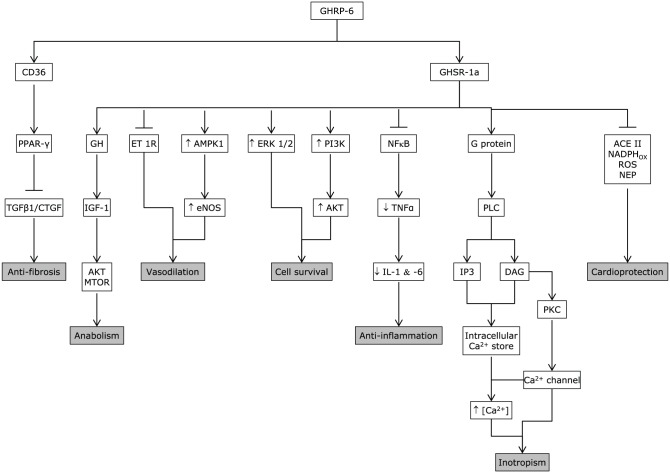Figure 4.
GHRP mechanism of action. GHRPs are endowed with the ability to bind two different receptors that seem to mediate its cytoprotective and other pharmacological properties (GHS-R1a and CD36). The main biological properties/pharmacological actions of GHRP-6 as cyto- and cardioprotective candidates are summarized as follows: Inotropic: mediated by an elevation of Ca2+ influx via PLC/DAG/PKC, through the voltage-gated calcium channel, triggering Ca2+ release from thapsigargin-sensitive intracellular stores, which translated in a positive inotropic response without a chronotropic effect. Anti-fibrotic: via upregulation of PPARγ, which is followed by a transforming growth factor-beta (TGF-β), CTGF, and platelet-derived growth factor (PDGF) downregulation. Anti-inflammatory: blunts NFκB expression and activation. Cell survival: it involves the phosphatidylinositol 3-kinase/RAC-alpha serine/threonine-protein kinase (PI-3K/AKT1) pathway, as the induction of the hypoxia-inducible factor-1 alpha (HIF-1α). Cardioprotective: as shown, it involves different biological actions that converge to enhance cardiomyocytes survival. Vasodilatory: it seems to involve e-NOS upregulation and endothelin activity reduction. Anabolic: it is mediated by the IGF-1/AKT1 and mTOR pathway activity.

